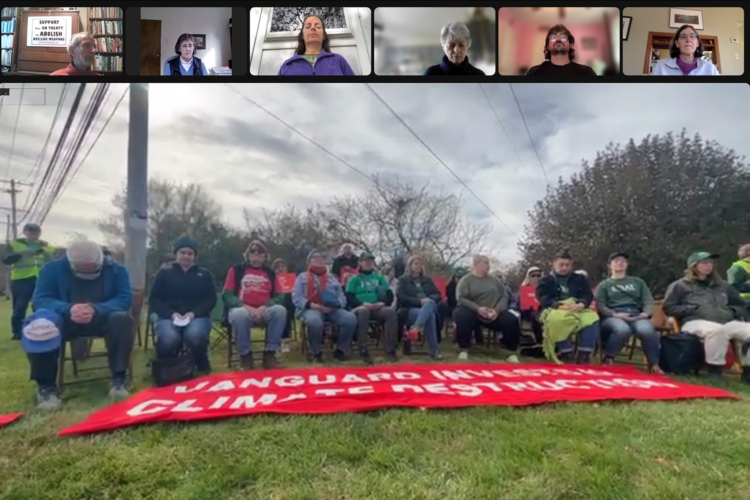Roadmaps to a Better Future: Analyzing Climate Change Solutions Without Geoengineering

By Judy Lumb.
HOW DO WE ensure a future on Earth for humans and other creatures? Three recent reports analyze solutions to climate change that meet the ambition of the Paris Agreement.
The Climate Urgency: Setting Sail for a New Paradigm
Coopération Internationale pour le Développement et la Solidarité (CIDSE) is a French Catholic organization, the name of which can be translated as “International Cooperation for Development and Solidarity.” Following the Papal Encyclical Laudato SI’, CIDSE shows “how a paradigm shift in our food and energy systems – supported by structural lifestyle and societal changes – could greatly contribute to limit rise in average global temperature to 1.5°C without relying on risky and unproven Negative Emissions Technologies (NETs) or geoengineering” <cidse.org/wp-content/uploads/2018/09/CIDSE-The_Climate_Urgency_Sept_2018.pdf>.
CIDSE is concerned that NETs will cause severe and irreversible impacts worldwide, and especially to vulnerable communities and to the integrity of ecosystems. Holding out the hope that technology will save us will allow countries to postpone real emissions reductions and fossil fuel industries to continue polluting.
CIDSE focuses on two sectors, energy and agriculture. The energy sector must switch from fossil fuels to renewable sources, but that switch must be “just, inclusive, and transparent, and must not replicate the corporate structures that are currently governing the energy sector. Decentralization, diversification, human rights, and gender equality have to be considered when developing such renewable energy systems.”
For agriculture, CIDSE suggests that Agroecology would turn agriculture and the food system from problem to solution. They show five different levels of actions that must happen simultaneously: 1) Increase the efficiency of industrial/conventional practices, 2) Shift to organic agriculture, 3) Re-design toward integrated and resilient agroecosystems, 4) Establish alternative forms of economic exchange and market relationships 5) Build food sovereignty worldwide by relocalizing food systems to reduce food loss and waste.
CIDSE acknowledges that these changes require a paradigm change, “new narratives, a different cultural approach – putting sufficiency at its heart – and of course, transforming our political and economic systems – away from the destructive growth imperative that lies at the heart of the current system.”
Missing Pathways to 1.5C: The Role of the Land Sector in Ambitious Climate Action
The Climate Land Ambition and Rights Alliance (CLARA) is a consortium of advocates, faith-based organizations and scientists concerned with climate mitigation and adaptation. CLARA, too, is concerned that many reported solutions depend on untested carbon capture and storage methods and other NETs. This report focuses on land-based solutions: 1) Strengthening Indigenous and Community Land Rights, 2) Restoring Forests and Other Ecosystems, and 3) Transforming Agriculture. Mechanisms for transforming agriculture include: Agroecology and Agroforestry, reduction in synthetic nitrogen fertilization, less and better livestock production, healthy diets, reductions in food transport and waste. climatelandambitionrightsalliance.org/report.
Achieving the Paris Climate Agreement Goals
Subtitled “Global and Regional 100% Renewable Energy Scenarios with Non-energy GHG Pathways for +1.5°C and +2°C,” this book reports an ambitious study by a team of experts supported by the Leonardo DiCaprio Foundation to “develop a roadmap for how we can actually stay below this critical climate threshold. The findings, outlined in this book, give cause for optimism. With a transition to 100% renewable energy by mid-century and a major land conservation and restoration effort, it is possible to stay below the 1.5°C limit with technologies that are available right now” (Leonardo DiCaprio). The authors have compiled technical detail on the pathways to keep global warming under 1.5°C and 2°C, considering current renewable technology, metal resources needed, global transport, and energy generation in all areas of the world, development scenarios, and recommended policies for the energy, buildings, transport, industry sectors, and for a political framework.
From Section 13.2.1.1 General Energy Policies: “The most important interventions to accelerate the energy transition are:
•Renewable energy targets and incentives for their deployment and expansion;
•Internalization of external costs by carbon tax or surcharge;
•Phase-out of fossil fuel subsidies;
•Accelerated replacement of fossil and inefficient technologies.”
This free 535-page book is relatively optimistic, while providing all the technical detail one could every need. It was edited by Sven Teske of the Institute for Sustainable Futures at the University of Technology Sydney, Australia and is available for download online <springer.com/gp/book/9783030058425>.


